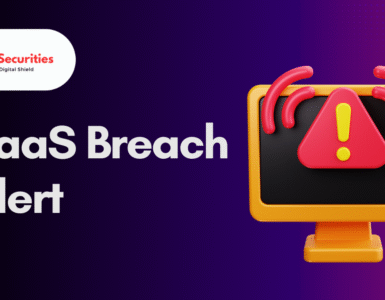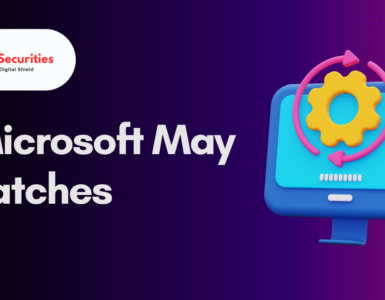In the ever-evolving landscape of cybersecurity, newly discovered vulnerabilities often serve as a reminder of the importance of robust configurations, code hygiene, and timely patching. Recent disclosures from leading security researchers have unveiled multiple critical security flaws affecting two widely used systems: the Rack Ruby web server interface (specifically the Rack::Static middleware) and Infodraw’s Media Relay Service (MRS).
Together, these flaws expose organizations across industries to unauthorized data access, log tampering, malicious file injection, and even full system compromise through path traversal attacks.
In this in-depth analysis, we’ll explore the nature of these vulnerabilities, how they can be exploited, the impact on affected systems, and—most importantly—how developers, administrators, and DevSecOps professionals can mitigate the risks before attackers strike.
What Is Rack and Rack::Static?
The Ruby Web Foundation
For those unfamiliar, Rack is a modular interface that connects Ruby web frameworks like Sinatra, Padrino, and Ruby on Rails to web servers like WEBrick, Puma, or Unicorn. It provides a standard interface between web servers and Ruby applications, acting like a middle layer in request-response cycles.
Within Rack, one crucial component is the Rack::Static middleware, which handles serving static files such as:
- HTML
- CSS
- JavaScript
- Images
- Fonts
This middleware improves performance by handling requests for static assets before they reach the main application, reducing load and latency.
The Vulnerabilities in Rack::Static (CVE-2025-27610, CVE-2025-27111, CVE-2025-25184)
Security researchers at OPSWAT discovered and disclosed three major vulnerabilities in Rack’s static file-serving component that, when combined, can give attackers a dangerous level of access to systems running vulnerable versions of the middleware.
CVE-2025-27610 – Path Traversal (CVSS Score: 7.5)
- Type: Path Traversal
- Impact: Unauthorized file access
- Severity: High
This is the most critical of the three vulnerabilities. It enables unauthenticated attackers to exploit directory traversal flaws to read sensitive files outside the intended web root directory.
How it works:
The middleware fails to adequately sanitize the file path provided in user input. For example, a crafted request such as:
bashCopyEditGET /../../../etc/passwd
Could allow an attacker to access arbitrary files on the server, including:
- Database configurations
- API keys
- Credentials (secrets.yml, environment variables)
- SSH keys
- Source code files
Root Cause:
When the :root parameter is not explicitly defined in the Rack::Static configuration, the middleware defaults to using the current working directory (Dir.pwd). If :urls allows broader path access, attackers can leverage this to break out of the static directory.
CVE-2025-27111 and CVE-2025-25184 – Log Injection via CRLF (CVSS 6.9 and 5.7)
These two flaws deal with Carriage Return Line Feed (CRLF) injection, affecting log files.
Consequences include:
- Log tampering: Alter or delete entries
- Stealth attacks: Hide malicious activity in logs
- Malicious payload injection into logs for future exploitation or debugging tools that parse logs
In large-scale production systems, where logs are central to security monitoring and compliance (e.g., PCI DSS, HIPAA), these flaws present significant operational and forensic challenges.
Real-World Impact and Exploitation Scenarios
1. Data Breach from Misconfigured Rack Apps
In modern web stacks, it’s common to serve both frontend static content and backend logic in the same application. If Rack::Static is misconfigured:
- An attacker could request
/../../../../config/database.ymland extract database credentials. - Read
secrets.ymlor.envto dump secrets and API tokens - Explore source code and logic to identify business logic flaws
2. SSRF & RCE Chains
While Rack::Static doesn’t directly allow code execution, exposing internal files could assist in:
- SSRF (Server-Side Request Forgery) via leaked configs
- LFI to RCE chains when logs are injected with malicious code and later parsed by vulnerable systems
Mitigation and Recommendations
Official Patch
The Rack team has acknowledged the vulnerabilities and issued patches. Update to the latest version immediately if your application uses Rack::Static.
Secure Configuration Best Practices
- Always explicitly define the
:rootdirectory to a sandboxed folder. - Validate and sanitize all user inputs rigorously.
- Log to a centralized logging system where inputs are filtered and encoded.
- Deploy WAF (Web Application Firewalls) with path traversal pattern detection.
Monitoring and Detection
Set up anomaly detection for:
- Repeated “../” sequences in URLs
- Access to unusual file extensions or system paths
- Log injection patterns (
%0a,%0d,\n)
Spotlight on Infodraw Media Relay Service Vulnerability (CVE-2025-43928 – CVSS 9.8)
Another alarming vulnerability comes from Infodraw, a manufacturer of mobile video surveillance solutions used across law enforcement, fleet management, and public transportation.
Vulnerability Summary
- Type: Path Traversal & Arbitrary File Deletion
- Vector: Username field on login page
- Impact: Full system access
- Severity: Critical (CVSS 9.8)
- Exploitable by: Unauthenticated users
The vulnerability allows an attacker to supply a malicious username like:
bashCopyEdit../../../../etc/passwd
This input is insufficiently sanitized by the login mechanism and enables file read or deletion based on the backend logic.
What’s at Stake?
1. Government & Law Enforcement Risks
Infodraw’s clients include national law enforcement agencies. A path traversal attack here doesn’t just leak system files—it could:
- Expose live surveillance footage
- Compromise investigation logs and identities
- Leak GPS tracking data
This isn’t a theoretical issue; vulnerable systems have been confirmed in Belgium and Luxembourg.
2. Unpatched and Unprotected
As of this writing, no patch is available from Infodraw. The recommendation is clear:
- Take systems offline
- Place behind VPNs or firewall restrictions
- Block unknown IP addresses
Inaction could lead to nation-state actors weaponizing this flaw for surveillance disruption or espionage.
A Broader Pattern: Why Path Traversal Still Exists in 2025
You might wonder—how does a basic security issue like path traversal still exist in 2025?
There are several reasons:
- Assumptions about input: Developers trust that user inputs will be well-formed.
- Legacy code reuse: Libraries written a decade ago are still used in modern stacks.
- Inadequate code audits: Security is often retrofitted rather than designed in.
- Time-to-market pressure: Developers prioritize feature delivery over defense.
As DevSecOps becomes more mainstream, it’s critical for teams to shift security left in the development process.
Final Thoughts: The Cost of Insecure Defaults
These newly exposed flaws in Rack::Static and Infodraw’s MRS underscore a recurring theme in cybersecurity:
“Insecure defaults are the enemy of secure design.”
From improper root directories to unvalidated inputs, small misconfigurations can lead to catastrophic breaches.
What Can You Do?
- If you’re using Ruby or Rack, audit your Rack::Static usage today.
- If you manage Infodraw systems, take immediate action to segment and shield access.
- Adopt threat modeling, code reviews, and dynamic testing as part of your CI/CD pipelines.
Stay tuned for more updates on evolving vulnerabilities and security practices. Secure coding is everyone’s responsibility.
Need help assessing your Rack or Ruby application for vulnerabilities? Drop a comment or reach out—we’re happy to guide you through.















Add comment